Air Filtration Systems for Home: Improving Indoor Air Quality
Improve the quality of indoor air with our effective air filtration systems for your home. Learn how you can enhance your air quality and ensure a healthy environment in your living space. Get informed now!
Problems with unfiltered air: A danger to family and pets!
Unfiltered air can cause a range of health problems for family members and pets. Here are some of the most common issues:
- Allergies: Unfiltered air can contain allergens like dust, pollen, and mold spores. These can trigger allergic reactions such as sneezing, coughing, red, itchy eyes, and rashes.
- Asthma and other respiratory diseases: The pollutants present in unfiltered air can trigger asthma attacks and lead to other respiratory problems. In the long term, this can increase the risk of chronic respiratory diseases like COPD.
- Infections: Unfiltered air can contain pathogens like viruses and bacteria that can cause infections.
- Pet-related problems: Pets can experience similar health issues to humans, including allergies and respiratory diseases. Some animals are particularly sensitive to poor air quality, such as birds.
To improve indoor air quality and avoid these problems, it can be helpful to use an air purifier or regularly ventilate, especially in rooms where a lot of time is spent.
The Impact of Air Quality on Human and Pet Respiratory Health: Breathe Easier!
Poor air quality poses a significant threat to the respiratory health of both humans and pets. Exposure to pollutants in the air can lead to a range of health problems, including heart and cardiovascular disease, lung diseases like asthma and chronic obstructive pulmonary disease (COPD), and various respiratory issues.
For humans, particles deposited in the respiratory tract in sufficient amounts can induce inflammation. This has been demonstrated in both animal and human studies. People with pre-existing conditions such as asthma or COPD may experience chest discomfort, difficulty breathing, and other symptoms when exposed to poor air quality.
As for pets, they can suffer from coughing, gagging, spitting up foam or mucous, sneezing, trouble breathing, nasal discharge, runny eyes, fever, lethargy, and exercise intolerance due to poor air quality. Pets, like humans, can also develop long-term health conditions, such as respiratory disease, from repeated exposure to poor indoor or outdoor air quality.
It’s important to note that pets’ respiratory systems are much more sensitive than those of humans, making them particularly susceptible to damage from toxic fumes and smog. Pets with respiratory diseases have been found more commonly exposed to indoor air pollution, which emphasizes the importance of maintaining good indoor air quality for the health of our pets.
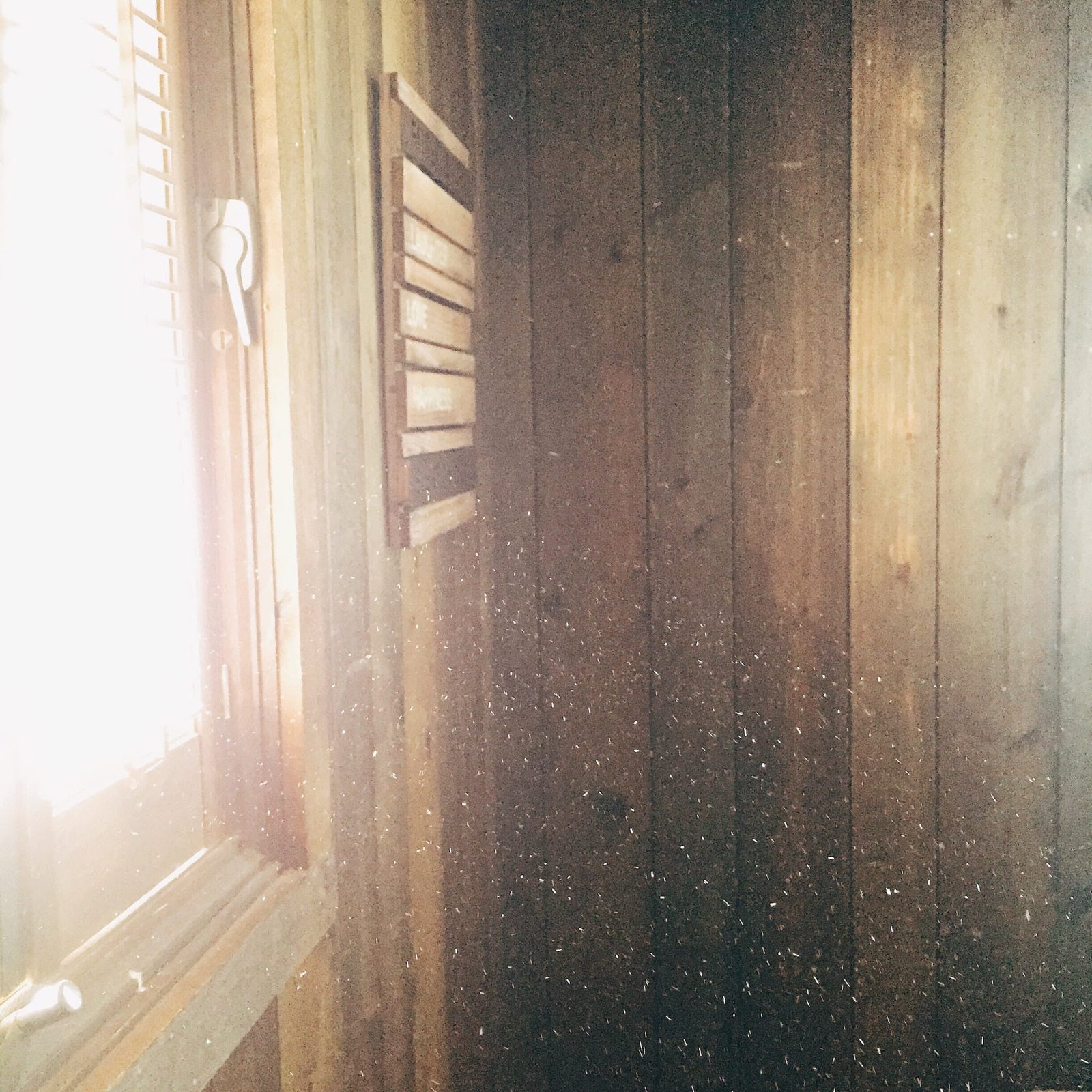
Air pollution can have severe impacts on animals just as it does on humans, causing not only respiratory issues but also allergies and heart problems. Therefore, it’s crucial to ensure that the air quality in our homes and environments is healthy for both us and our pets.
In conclusion, poor air quality can have detrimental effects on the respiratory health of both humans and pets. It’s essential to take measures to improve air quality, such as using air purifiers and reducing sources of indoor pollution, to protect the health of all members of a household.
Breathe Easy: Tackling Germs, Bacteria, and Allergens in the Air!
The dangers of germs, bacteria, dust mites, and other allergens present in unfiltered air are numerous and can significantly impact our health.
Germs and Bacteria:
These microorganisms are omnipresent in our environment. While many are harmless, certain types can cause diseases. In unfiltered air, harmful germs and bacteria can proliferate and be inhaled, leading to respiratory infections and other health problems. Gram-negative bacteria, although rarely associated with airborne transmission as they generally require moist environments for persistence and growth, can still pose a risk in certain conditions.
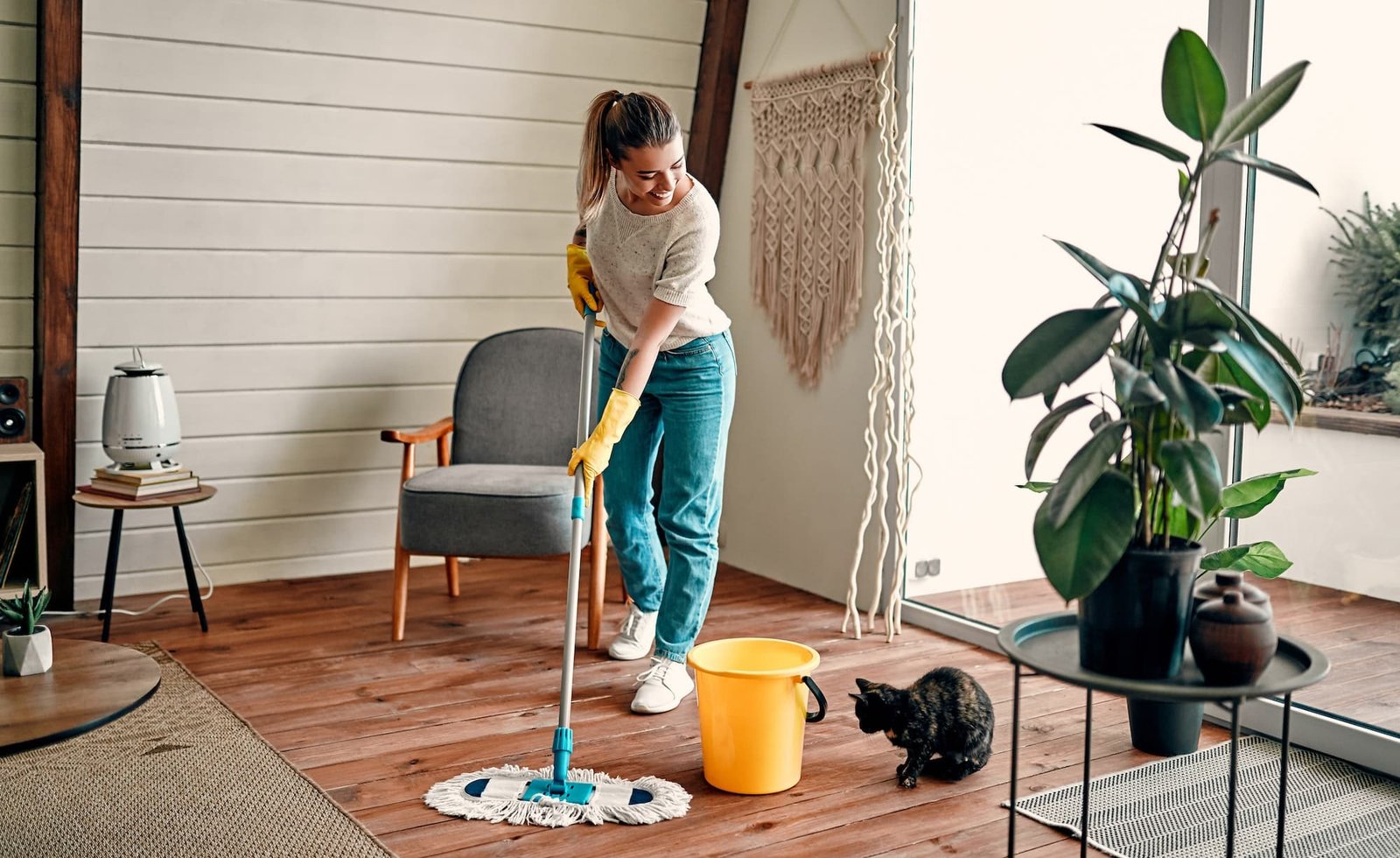
Dust Mites:
Dust mites are microscopic creatures that thrive in household dust. While they don’t usually stay airborne for long, their allergens can be stirred up into the air and inhaled, causing allergic reactions. Symptoms of a dust mite allergy can range from mild, such as occasional runny nose, watery eyes, and sneezing, to severe, causing significant discomfort and disruption to daily life.

Other Allergens:
Unfiltered air can contain various other allergens, including pet dander, mold spores, pollen, and dust mite debris. These particles can trigger allergies, leading to symptoms like sneezing, congestion, itchy and red eyes, and even asthma attacks. In some individuals, these allergies can lead to serious health problems.
Airborne particles, including smoke and smog, are also of concern. They can irritate the respiratory system and exacerbate existing conditions like asthma and allergies.
To mitigate these dangers, it’s essential to maintain good indoor air quality. This can be achieved through regular cleaning to reduce dust and allergens, proper ventilation to prevent the buildup of harmful substances, and using air purifiers to filter out particles and microorganisms.

The Diverse Universe of Airborne Particles: From Microscopic to Larger Particulates
Airborne particles, which range from minuscule microscopic particulates to larger airborne particles, play a significant role in air quality and human health. These particles, which can include dust, pollen, soot, ash, and even smoke particles, are ubiquitous in our environment. They can be directly emitted—referred to as primary particles—or formed within the atmosphere from the condensation of trace gases. Larger particles often settle quickly due to gravity, but smaller, microscopic particles can remain suspended in the air for longer periods, increasing the likelihood that they will be inhaled. Smoke particles, in particular, can pose health hazards due to their small size and chemical composition. Further concerns arise with radioactive particles, which carry additional risks due to their radioactivity. Understanding the nature and behavior of these diverse particulates is crucial for mitigating their potential impacts on human health and the environment.
Signs of Poor Air Quality: Coughing, Sneezing, Runny Nose, Itchy Eyes, and Skin Irritation
Poor air quality is a widespread concern that can cause a variety of health issues. The symptoms often resemble those of common allergies or colds, making them sometimes difficult to attribute directly to the air quality. However, if you notice these symptoms are persistent or worsening in certain environments, it may indicate that poor air quality is the culprit.
- Coughing: Persistent coughing can be a reaction to airborne irritants. When we breathe in pollutants, our body tries to expel them by coughing.
- Sneezing: Sneezing is another way our bodies try to rid ourselves of irritants or allergens. If you find yourself sneezing frequently in a particular environment, it might be due to poor air quality.
- Runny Nose: A runny nose is a common symptom of many allergies. It can also be a response to poor air quality, as our nasal passages produce extra mucus to trap foreign particles.
- Itchy Eyes: Irritants in the air can cause inflammation and irritation in the eyes, leading to an itching sensation. This is a common response to dust, smoke, and other airborne pollutants.
- Skin Irritations: Poor air quality can also affect our skin. Dry, irritated, or itchy skin can be a response to various pollutants in the air. In some cases, people may experience rashes or other skin reactions.
If you consistently experience these symptoms, it’s advisable to consider the quality of air in your environment. Improving ventilation, using air purifiers, and regularly cleaning to reduce dust and other allergens can help improve indoor air quality and reduce these symptoms.
Easy Steps to Enhance Indoor Air Quality: Air Purifiers and Regular HVAC Filter Changes
Improving indoor air quality is crucial for maintaining a healthy living environment. There are numerous ways to improve the air quality in your home, and here are a few recommended by various sources:
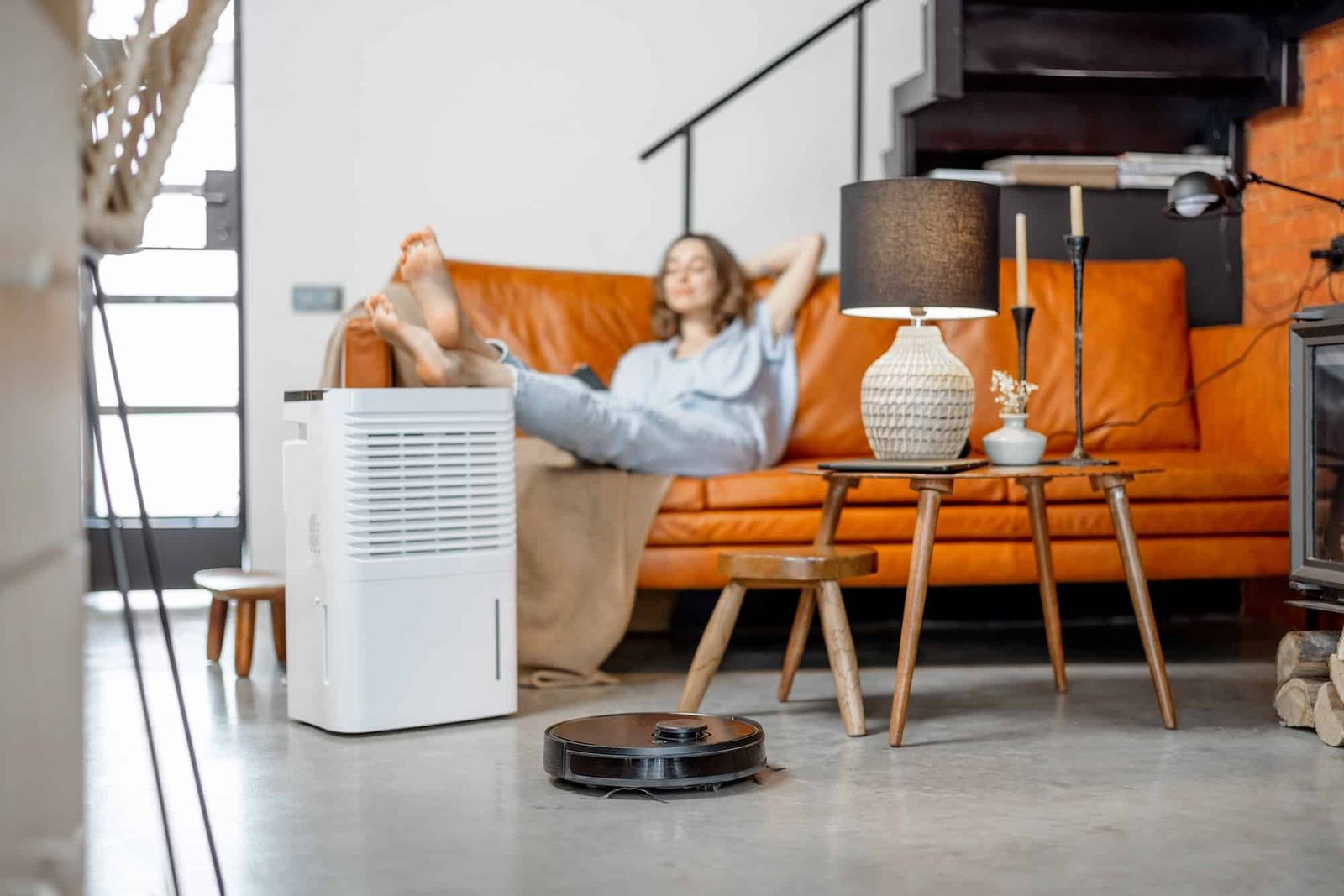
- Eliminate Sources of Pollution: The most effective way to improve indoor air quality is to eliminate individual sources of pollution or to reduce their emissions. This can include not smoking indoors, minimizing the use of candles or wood fires, or using products that don’t emit volatile organic compounds (VOCs).
- Regular Cleaning: Good indoor hygiene can greatly cut down on dust and animal dander. Regular vacuuming, dusting, and washing of linens can help reduce allergens in the home.
- Air Purifiers: Using an air purifier can help to remove pollutants from the air. They can be particularly beneficial for people with allergies or asthma.
- Ventilation: Proper ventilation is essential for good indoor air quality. This can be as simple as opening doors and windows to allow fresh air to circulate throughout your home.
- HVAC Filters: Using air filters in your HVAC systems can help ensure they are functioning at their best levels. These filters trap dust, pollen, and other airborne particles, preventing them from circulating in your home. Regularly changing these filters can help maintain good air quality.
- Control Allergens: Reducing clutter, regularly washing bedding in hot water, and keeping pets out of certain rooms can help control allergens.
By implementing these strategies, you can significantly improve the air quality in your home, making it a healthier place for you and your family.
Easy Hacks to Reduce Allergens in Your Home: Weekly Vacuuming and Pet Care
Reducing allergens in your home is essential to maintaining a healthy living environment, especially for those who suffer from allergies. Here are some tips to help you minimize the presence of allergens in your home:
Regular Cleaning: Dust and pet dander are common sources of allergens. Make sure to clean your home regularly to keep these allergens under control. Vacuuming once or twice a week with a vacuum that has a high-efficiency particulate air (HEPA) filter can greatly reduce the amount of allergens in your home.
Control Dust Mites: Keep surfaces in your home clean and uncluttered to prevent dust mites from thriving. Using an air cleaner with a HEPA filter can also help remove some allergens such as pollen or pet dander.
Pet Care: If you have pets, it’s important to take steps to control pet allergens. Bathe your pets at least once a week to reduce the amount of allergen in their dander. The AAFA also recommends equipping your vacuum with a HEPA filter to effectively move pet hair and stir up allergens that have settled on carpets.
Allergen-Resistant Flooring: Consider investing in allergen-resistant flooring. Carpets can trap allergens, so hard surface flooring might be a better option for allergy sufferers.
Regularly Check Air Filters: Regularly cleaning or replacing the air filters in your heating and cooling system can help reduce the amount of allergens circulating in your home.
Keep Outdoor Allergens Outside: Try to keep outdoor allergens from entering your home. This can be as simple as removing shoes when entering the house and washing clothes after being outside.
Remember, everyone’s situation is unique, so what works best for you may differ from what works best for others. However, by taking these steps, you can significantly reduce the allergens in your home and improve your indoor air quality.
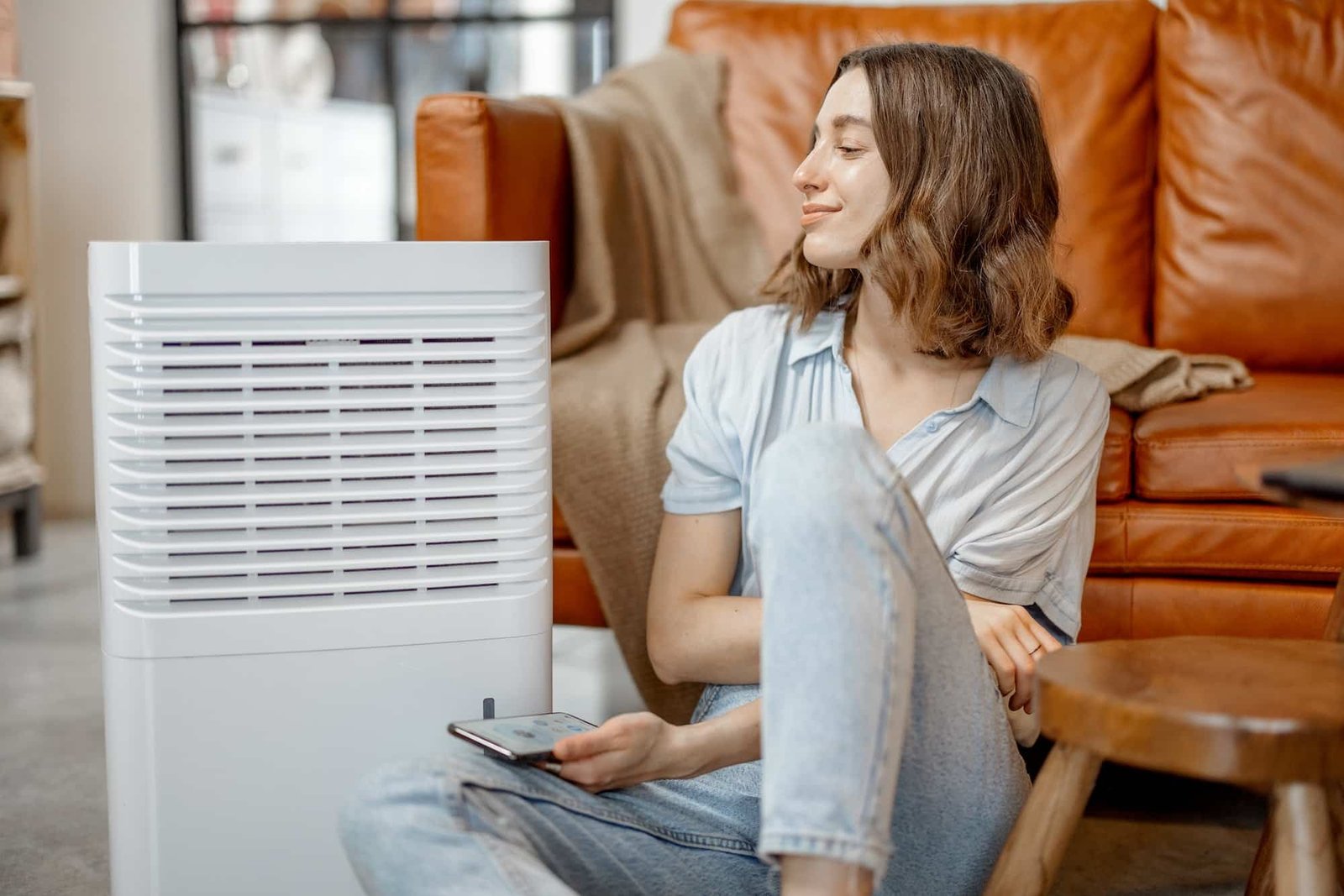
Understanding Indoor Air Quality Is Crucial for Health and Wellbeing
Understanding why indoor air quality is so important for health and well-being is critical, especially considering that humans spend a significant amount of time indoors.
Indoor Air Quality (IAQ) refers to the air quality within and around buildings and structures, especially as it relates to the health and comfort of building occupants. Poor IAQ can lead to immediate health effects, including headaches, dizziness, fatigue, and itchy eyes. In some cases, it can also lead to long-term health problems like respiratory diseases, heart disease, and cancer.
One reason IAQ is so important is because of the sheer volume of air we breathe in daily. We take about 20,000 breaths each day, and each one is an opportunity for pollutants to enter our bodies. These pollutants can come from various sources, including dust mites, pet dander, mold spores, tobacco smoke, and volatile organic compounds (VOCs) from household products.
Improving indoor air quality can help reduce the risk of health problems. For example, controlling common pollutants indoors can help lower your risk of indoor health concerns. Reducing sources of allergens and irritants in your home can significantly improve your indoor air quality.
Furthermore, good indoor air quality is not just important for physical health, but for mental well-being too. Studies have shown that poor IAQ can lead to decreased productivity and impaired learning in schools and workplaces.
IAQ is also a matter of health equity. Improving indoor air quality in the most affected areas will help improve health equity and ensure all people lead healthier lives.
Uncover Hidden Pollutants in Your Home: The Culprits Behind Indoor Air Quality Issues
Our homes, which are often considered safe havens, can unfortunately be sources of hidden pollutants that cause indoor air quality problems. Here is a look at some of these pollutants:
Volatile Organic Compounds (VOCs): These are gases emitted from certain solids or liquids, including paints, cleaning supplies, pesticides, building materials, and furnishings. VOCs like formaldehyde and benzene can cause health problems ranging from eye, nose, and throat irritation to liver, kidney, and central nervous system damage.
Mold and Mildew: These biological pollutants thrive in damp conditions and can release spores into the air. Inhaling mold spores can trigger allergic reactions and even lead to respiratory diseases.
Dust Mites and Pet Dander: These allergens are common in homes and can trigger allergic reactions when inhaled. Dust mites thrive in places like bedding, upholstered furniture, and carpets, while pet dander can be found anywhere in a home with pets.
Radon: This radioactive gas is released from the normal decay of uranium in rocks and soil and can enter homes through cracks in the foundation, floors, or walls. Exposure to radon is the second leading cause of lung cancer in the United States.
Carbon Dioxide: While typically not harmful at normal levels, high concentrations of carbon dioxide in poorly ventilated spaces can cause headaches, dizziness, shortness of breath, and impaired cognition.
Airborne Toxins: These can include alcohols and other compounds released from daily activities such as cooking, cleaning, and smoking.
Maintaining good ventilation, controlling humidity, regular cleaning, and investing in air purifiers can help improve the indoor air quality in your home and limit exposure to these hidden pollutants.
Discover to Identify Warning Signs of Poor Air Quality and Take Action Accordingly
Recognizing the warning signs of poor air quality is crucial for maintaining a healthy living environment. Here are five examples:
- Unusual and Persistent Odors: If your home has a persistent smell that you can’t identify or eliminate, it could be a sign of poor air quality. This could be due to mold, mildew, or chemical pollutants.
- Increased Allergy Symptoms: If you or others in your home have worsening allergy symptoms such as sneezing, coughing, itchy eyes, or a runny nose, it might indicate poor indoor air quality.
- Visible Mold or Mildew: The presence of mold or mildew in your home is a clear sign of poor air quality. These fungi release spores into the air which can cause health problems when inhaled.
- Dust Accumulation: Excessive dust or a faster-than-normal rate of dust accumulation can be a sign of poor air quality, particularly if it’s associated with HVAC systems.
- Health Symptoms Post Home Renovation: If you’ve recently renovated or remodeled your home and are experiencing symptoms like headaches, dizziness, or nausea, it could be due to poor air quality from new materials off-gassing chemicals.
Upon recognizing these signs, actions should be taken to improve the air quality. This could include increasing ventilation, using air purifiers, reducing sources of pollution, or consulting an air quality professional.
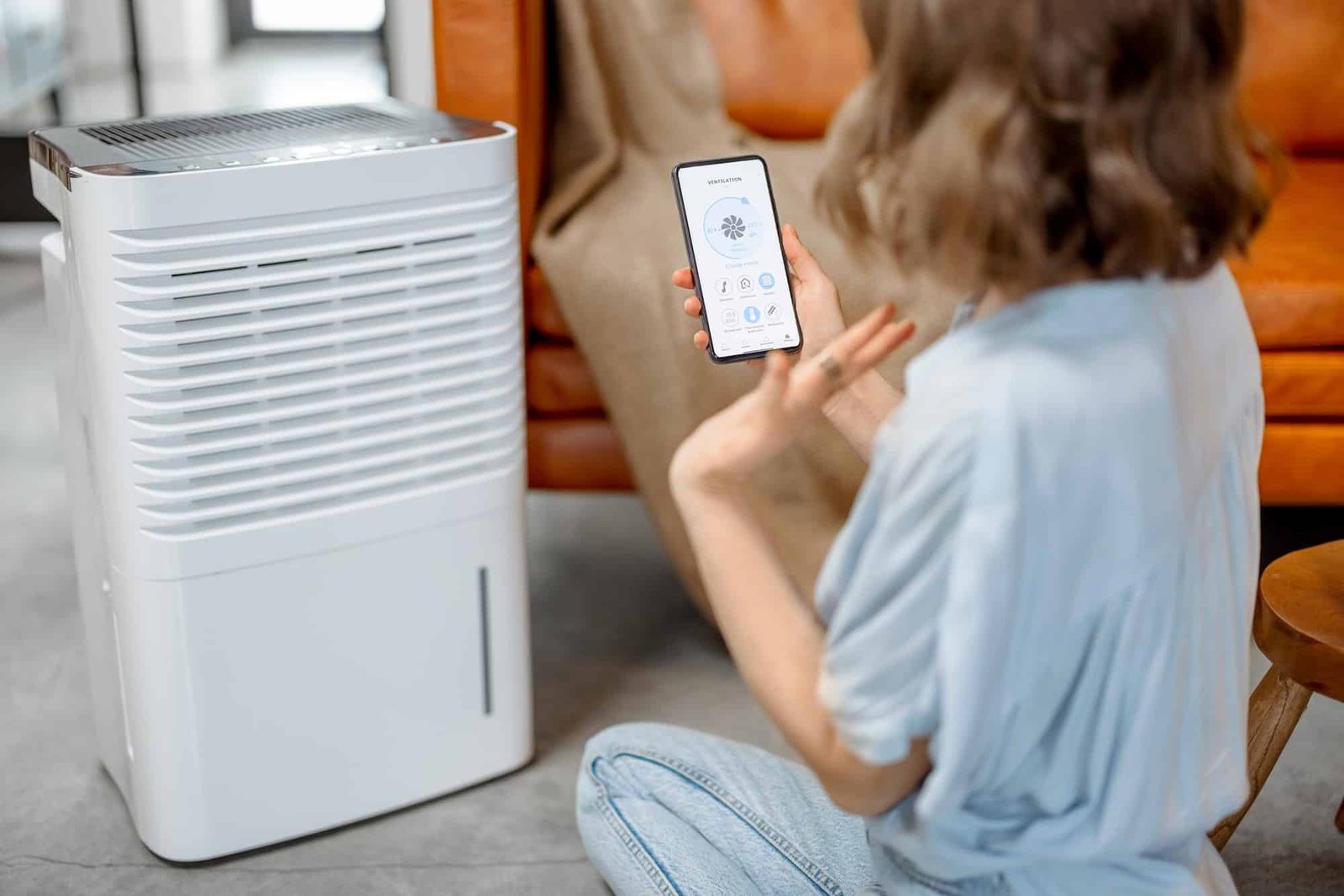
Discover the Health Benefits Tied to Improving Indoor Air Quality
Improving indoor air quality is not just beneficial, but essential for our health and wellbeing. As we spend a significant amount of our time indoors, the quality of the air we breathe can have profound effects on our health. Good indoor air quality can help to prevent respiratory problems, fatigue, and headaches. Furthermore, both short- and long-term exposure to indoor air pollution can lead to a range of health issues including respiratory diseases, heart disease, and cognitive deficits. Poor ventilation can exacerbate these health effects, leading to conditions like the “sick building syndrome”. On the other hand, improving air quality by using methods like better ventilation systems or whole house fans can significantly reduce indoor pollution. This not only leads to economic and environmental benefits but also brings about substantial health benefits associated with improved local air quality. The absence of air pollutants that cause irritations or smell bad also enhances the quality of life, making clean air an essential component for good health.
Explore the available technologies for monitoring and regulating air quality in your home – a breath of fresh air!
Monitoring and regulating indoor air quality is crucial for maintaining a healthy living environment. Numerous technologies are available that can help you achieve this. Here’s an overview of some of these technologies:
- Low-Cost Air Pollution Monitors: These devices use sensors to detect and monitor specific air pollutants. The data they collect can be reported through apps or other user-friendly interfaces, allowing homeowners to track their indoor air quality in real time.
- Wireless Sensor Technologies: A solid platform for the development of Indoor Air Quality (IAQ) monitoring systems, wireless sensor technologies enable real-time tracking of various indoor pollutants. This technology is particularly beneficial as it allows for easy installation and scalability.
- Internet of Things (IoT) Based Systems: IoT-based systems are becoming increasingly popular in IAQ monitoring. They enable real-time, low-cost, and easy-to-install air quality monitoring. For example, an IoT-based e-nose system has been proposed for real-time air quality measurement.
- Comprehensive IAQ Monitoring Systems: These sophisticated systems provide an overview of Indoor Air Pollution (IAP) by monitoring multiple parameters simultaneously. Some systems can observe up to 12 sensor varieties, including pressure, temperature, relative humidity, and GPS.
- 5. Regulatory Monitors: These technologies have been designed and tested to reduce bias and increase precision in their measurements. Though they may be more expensive, regulatory monitors provide highly accurate data on indoor air quality.
- Office Air Quality Sensors: Good indoor air quality is important not just in homes, but in offices, too. Studies suggest that good indoor air quality can alleviate symptoms of asthma, reduce absenteeism, and even improve cognitive function. Office air quality sensors can help monitor and maintain optimal air quality in these spaces.
By leveraging these technologies, we can gain a more holistic understanding of air pollution and take steps to improve the air quality in our homes and offices.
Discover how air filtration systems can help reduce pollutants in your home!
Air filtration systems can play a vital role in reducing pollutants in your home, thereby improving indoor air quality. These systems work by drawing in air and passing it through a series of filters that capture harmful particles such as dust, pollen, mold spores, pet dander, and bacteria. Some advanced air purifiers also have activated carbon filters that can absorb volatile organic compounds (VOCs) and other gaseous pollutants. Additionally, certain test air purifiers filters use ultraviolet (UV) light technology to kill bacteria and viruses. By continuously cycling and filtering the air in your home, these systems can significantly reduce the concentration of pollutants, helping to create a healthier living environment. It’s important to note that while air filters are effective, they should be used as part of a comprehensive approach to improve indoor air quality, which includes source control of pollutants and adequate ventilation.
Benefits a Home Air Filtration System: Breathe Easier and Live Healthier
Air filtration systems in homes have a multitude of benefits that can significantly enhance the quality of life. Here are some key advantages:
- Reduction of Allergens: Air filtration systems can reduce the concentration of allergens like dust, pet dander, and pollen in the air, providing relief for allergy sufferers.
- Removal of Harmful Chemicals: Some air filters can remove harmful chemicals from the air, contributing to a healthier breathing environment.
- Disinfection of Air: Certain air filtration systems can disinfect the air in your home, reducing the risk of airborne diseases.
- Elimination of Odors and Smoke: Activated carbon filters in air purifiers are effective in removing odors and smoke, which not only improves air quality but also makes your home more pleasant.
- Improved Hygiene: Air purifiers can remove potentially harmful contaminants from the air, which can improve hygiene in your home.
- Low Maintenance: Whole-house air purifiers are often low maintenance, quiet, space-saving, and work 24/7, providing consistent air purification.
- Refreshing Stale Air: Air purifiers can refresh stale air, reducing the chances of health issues caused by indoor pollutants.
By investing in a home air filtration system, you can create a cleaner, healthier, and more comfortable living environment.
Discover Common Household Pollutants and How to Safely Eliminate Them
Common pollutants in homes can vary greatly, but some of the most prevalent include asbestos, biological pollutants, carbon monoxide (CO), and various particulates like dust and pollen.
- Asbestos, often found in older homes, is harmful when inhaled and can lead to lung disease. If suspected, it should be professionally tested and removed.
- Biological pollutants like mold, dust mites, and pet dander can trigger allergies and asthma. Regular cleaning, using a HEPA air filter, and maintaining humidity levels between 30-50% can help reduce these pollutants.
- Carbon Monoxide, a colorless, odorless gas, can be deadly in high concentrations. It’s produced from burning fuel in cars, stoves, grills, fireplaces, and furnaces. Installing CO detectors and ensuring proper ventilation can prevent CO buildup.
- Particulates such as dust and pollen can also degrade indoor air quality. Regular vacuuming with a HEPA filter-equipped vacuum, keeping windows closed during high pollen times, and using air purifiers can help manage these pollutants.
- Formaldehyde is a common preservative and adhesive in furniture, carpets, drapes, and other household items. To limit exposure, opt for low-formaldehyde products, increase ventilation, and use indoor plants that can absorb formaldehyde.
Lastly, if anyone smokes cigarettes, vapes, or uses marijuana indoors, it’s recommended to restrict these activities to outdoor areas away from doors and windows to minimize indoor pollution6.
Consider Various Types of Filters: HEPA or Activated Carbon Filters
When it comes to improving indoor air quality, different types of filters such as HEPA (High-Efficiency Particulate Air) filters and activated carbon filters are often considered. Each type has its unique capabilities and applications.
HEPA Filters: These filters are renowned for their ability to remove 99.97% of pollutants and allergens from the air. They work by trapping particles, including large contaminants like dust and pet dander. They can even capture nanosized particles, making them an excellent choice for people with allergies or respiratory conditions.
Activated Carbon Filters: Unlike HEPA filters that trap particles, activated carbon filters adsorb particles from the air. They excel at trapping odors and chemicals, making them ideal for households with smokers, pets, or strong cooking smells. However, they must be used in conjunction with another air filter, such as a HEPA air filter, to effectively purify the air.
Combination of Filters: For comprehensive air purification, a combination of HEPA and activated carbon filters is often recommended. The HEPA filter removes most of the very large particles and contaminants, while the activated carbon filter traps many of the extremely small particles and gases. This combination ensures that a wide range of pollutants are removed from the air, providing cleaner and healthier indoor air.
Remember, the best choice of filter depends on your specific needs and the types of pollutants you’re looking to remove from your indoor environment. It’s always advisable to consider both the pros and cons of each filter type before making a decision.
Breathe Easier with True HEPA Filters: Your Key to Cleaner, Healthier Indoor Air
As we spend a significant portion of our lives indoors, the quality of the air we breathe within our homes and workplaces is of paramount importance. Enter HEPA filters and HEPA air purifiers – your ultimate allies in achieving cleaner, healthier indoor air. Short for High Efficiency Particulate Air, ‘true HEPA filters’ are the gold standard in air filtration, designed to capture 99.97% of airborne particles as small as 0.3 microns. This includes common pollutants like dust, pollen, mold spores, pet dander, and even some bacteria. The benefits of using true HEPA filters in air purifiers are immense. Not only do they drastically reduce the amount of airborne pollutants in your indoor environment, but they also contribute to alleviating allergies and asthma symptoms, promoting overall respiratory health. In a world where indoor air quality is often worse than outdoor air, the need for effective air purification has never been more urgent. Don’t compromise on the air you breathe. Opt for air purifiers with true HEPA filters – a reliable, convenient, and highly effective solution for cleaner, healthier indoor hepa air purifier solutions.
The Pros and Cons of HEPA and Activated Carbon Filters: A Comprehensive Comparison!
HEPA Filters: Pros:
- High Efficiency: HEPA filters are designed to capture 99.97% of particles that are 0.3 microns or larger.
- Broad Range of Particle Removal: Effective at removing a wide range of airborne particles, including dust, pollen, mold spores, and pet dander.
- Widely Used and Trusted: HEPA filters are widely used in various applications, including homes, offices, hospitals, and airplanes.
HEPA Filters: Cons:
- No Gas or Odor Removal: HEPA filters are not effective at removing gaseous pollutants or odors.
- Frequent Replacement Needed: Depending on air quality and usage, HEPA filters may need to be replaced every 12-18 months, which can be costly.
- Energy Consumption: These filters can put a strain on the fan motor in your air purifier, leading to increased energy consumption.
Activated Carbon Filters Pros:
- Gas and Odor Removal: Activated carbon filters are highly effective at absorbing gases, chemicals, and odors.
- Chemical Sensitivity Relief: These filters can provide relief for individuals with chemical sensitivities.
- Enhanced Air Purification: When used in combination with other filters (like HEPA), activated carbon filters improve the overall performance of air purification systems.
Activated Carbon Filters Cons:
- Limited Particle Removal: While great for gases and odors, activated carbon filters are not designed to remove particulate matter.
- Saturation: Over time, the activated carbon filter becomes saturated and less effective at absorbing gases and needs to be replaced.
- Not Effective Against Microorganisms: These filters cannot kill or remove bacteria, viruses, or other microorganisms.
Differences between HEPA and Activated Carbon Filters: The Ultimate Faceoff!
HEPA (High Efficiency Particulate Air) and activated carbon filters are two commonly used air purifier technologies that serve different purposes in improving indoor air quality.
HEPA filters are designed to capture particles, including very small ones such as PM 2.5 particles1. They are incredibly effective at removing physical contaminants such as dust mites, pollen, pet dander, and mold spores from the air. However, HEPA filters are not designed to remove gases and odors.
On the other hand, activated carbon filters excel in adsorbing gaseous pollutants that pass through them, including volatile organic compounds (VOCs), odors, and chemicals. They work by trapping these pollutants in a bed of activated charcoal, a porous material with a large surface area that effectively “soaks up” these contaminant.
In summary, while both filter types can significantly improve the quality of indoor air, their functions are complementary rather than interchangeable. HEPA filters are best for trapping particulates, while activated carbon filters are better suited for adsorbing odors and gases. For optimal air purification, many modern air purifiers incorporate both HEPA and activated carbon filters in their systems.
Discover the Perfect Size of Air Filter System for your Home
Choosing the correct air filter size for your HVAC (Heating, Ventilation, and Air Conditioning) system is essential to ensure optimal performance and air quality in your home. Here’s a simple guide to help you find the right size:
- Check the Current Filter: The easiest way to determine the size of your air filter is to check the existing one. The dimensions are usually printed on the frame of the filter.
- Measure it: If the dimensions aren’t printed or are faded, use a tape measure to get the length, width, and depth of the filter. These measurements are typically rounded to the nearest inch.
- Consider the Actual and Nominal Sizes: It’s important to note that there are two sizes to consider – the actual size and the nominal size. The actual size is the exact measurement of the filter, while the nominal size is the rounded off number used for convenience. For example, if your filter measures 19.5 x 19.5 x .75 inches, the nominal size will be 20 x 20 x 1 inch.
Remember, using the correct size air filter is crucial for maintaining your HVAC system’s efficiency and prolonging its lifespan. An improperly sized filter can lead to reduced air flow and cause the system to work harder, resulting in higher energy costs and potential damage to the system.
Master the Art of Air Filters: Find the Perfect Match for Your Needs
Room size plays a critical role when selecting the best air purifier or filter system. Air purifiers, especially those with High Efficiency Particulate Air (HEPA) filters, are rated based on the size of the area they can effectively clean. This is typically measured in square footage and should match or exceed the size of your room for optimal performance.
For smaller rooms such as bedrooms or home offices, a compact air purifier may be sufficient. However, for larger spaces like living rooms or open-plan areas, a more powerful system will be needed to efficiently clean the air. It’s important to remember that an undersized air purifier may not fully remove airborne pollutants, while an oversized one could consume unnecessary energy.
Moreover, the layout and features of a room, like high ceilings or a large number of windows, can also influence the choice of air purifier brands and filter system. A rule of thumb is to choose an air purifier with a Clean Air Delivery Rate (CADR) that’s suitable for your space.
Discover the Costs of Purchasing and Installing an Air Filtration System
When considering the purchase and installation of an air filter system, it’s important to understand the associated costs. These can vary greatly depending on the type of air filtering system that you choose, its size, and the complexity of the installation process.
For a whole-house air purifier, costs typically range between $456 and $4,557, with the national average being around $2,448. The cost for installing such a system nationally averages at $2,497, but can fluctuate between $448 and $4,719. In certain locales like Tucson, the installation of a whole-home air purifier can range from $749 to $1,649.
On average, a whole-house air cleaner may cost anywhere from $675 to $1,500. The costs for specific types of filters, such as disposable, flat, and per pleated filters and HVAC filters, generally fall between $10 and $50 each. More advanced units like HEPA air purifiers can cost between $500 and $1000, while electronic air cleaners can range from $500 to $2,500 or more.
If you’re looking for a smaller-scale solution, a portable or single-room home air purifier might suit your needs. These standalone units can cost between $100 and $1000.
Remember, these are just averages and actual costs can vary based on factors like your location, the specific product brand, and any additional features the system may have.
In summary, while the upfront costs of purchasing and installing an air filter system can be significant, many homeowners find that the benefits in terms of improved air quality and potential health impacts make the investment worthwhile.
Master the Art of Maintenance and Upkeep to Keep Your System Running Smoothly
Maintaining and upkeeping your system, whether it’s a computer or a network, is crucial for its long-term functionality and performance. A proactive approach to maintenance, commonly known as preventive maintenance, is essential. This involves regular inspections and timely repairs to prevent potential breakdowns.
For computers, essential maintenance tips include updating your operating system regularly, uninstalling programs that are no longer in use, updating device drivers, and keeping the system clean. Regular cleaning of the computer helps prevent expensive repairs and keeps it working properly.
For network systems, a detailed package of services is usually incorporated into a typical network maintenance plan to keep systems running smoothly. This plan might include tasks like monitoring network performance, managing network security, and troubleshooting network problems.
Effective preventive maintenance often uses software like a Computerized Maintenance Management System (CMMS) to plan and schedule tasks based on real-time data insights. This type of software can help predict when certain parts might fail and schedule maintenance accordingly, reducing unexpected downtime.
When it comes to physical technology maintenance, it’s important to remember that most equipment and applications have a lifespan of 3-5 years, so planning for upgrades and replacements should be part of your strategy. Preventive maintenance also involves periodic cleaning of the system and its components.
In summary, regular maintenance and upkeep are vital to ensure your system continues to function properly. By following these guidelines, you can prolong the life of your system, improve its performance, and prevent costly repairs.
Regular Changes in Air Purifiers: Ensuring Fresh and Healthy Air!
Maintaining the effectiveness of your air purifier involves more than just switching it on and off. One crucial aspect is the regular replacement of the filter, which plays a significant role in ensuring the purity of your indoor air.
The frequency of filter changes largely depends on the type of filter your air purifier uses. For instance, True HEPA filters, known for their high efficiency in trapping small particles, typically have a usable life of about 8,760 hours or approximately every 12 months. Activated Carbon filters, which are effective in removing odors and gases, also follow a similar replacement timeline.
However, these timelines can vary depending on the air quality in your environment. In areas with poorer air quality, filters may need to be replaced more frequently, sometimes every 6 months.
While it might be tempting to clean and reuse filters to save on expenses, this could compromise the efficacy of your air purifier. HEPA filters, in particular, are not designed to be cleaned and reused.
Other types of filters, like pre-filters, have a shorter lifespan than replacement filters and should be replaced every 30 days, while carbon filters can last between three to six months.
Regular filter replacement is vital to ensure your air purifier functions at its best. Neglecting this routine maintenance can lead to reduced air flow and decreased purification efficiency. So keep an eye on your filter’s lifespan and make filter replacements only as necessary to continue enjoying cleaner, healthier air in your home.
FAQ Air Filtration Systems for Home
Do air filtration systems really work?
Yes, the best air purifiers and filtration systems do work. They are effective at cleaning the air in your home if you choose the right type of filter. HEPA filters, in particular, have been shown to be effective at filtering allergens from the air, removing about 99.97 percent of airborne particles. However, it’s important to note that while air purifiers can help reduce indoor pollutants and assist with allergies, there is limited medical evidence that they directly improve your health.
What is air filter system?
An air filter system, often referred to as an air purifier, is a device designed to improve indoor air quality by removing contaminants such as dust, pollen, pet dander, mold spores, and bacteria. These systems use various technologies, including High Efficiency Particulate Air (HEPA) filters, activated carbon filters, and UV-C light, among others, to trap and neutralize these pollutants. Some air filter systems are portable units for single rooms, while others can be integrated into the HVAC system to purify air throughout a building. They are commonly used in homes, offices, schools, and other indoor environments to promote healthier air and reduce the risk of health issues related to poor air quality.
What is the difference between an air purifier and an air filtration system?
An air purifier and an air filtration system both aim to improve indoor air quality, but they operate in different ways. An air purifier is a standalone device that removes pollutants from a specific area or room. They use various methods, such as filters, UV light, or ionization, to trap or neutralize airborne particles.
On the other hand, an air filtration system is typically part of a home’s HVAC (Heating, Ventilation, and Air Conditioning) system. It filters the air throughout the entire house as it circulates in the HVAC system. Air filtration systems primarily use physical filters to remove particles from the air.
In essence, while air purifiers are usually portable and used for specific areas, air filtration systems provide a whole-house solution integrated into your HVAC system.
Are air purification systems worth it?
Yes, air purification systems are generally considered worth it, especially for those with allergies, asthma, and other respiratory conditions. They have been shown to improve indoor air quality by reducing the concentration of allergens and pollutants. Whole-home air purifiers can be particularly cost-effective, especially if you have an energy-efficient system.
However, their effectiveness can vary, and not all air purifiers are equipped to properly filter the air in all homes1. The best air purification systems tend to use more than one technology. It’s also important to note that while air purifiers can help improve indoor air quality, there is limited medical evidence that they directly improve health or alleviate allergies and respiratory symptoms.
In conclusion, air purifiers can be a worthy investment, particularly for those living in areas with poor air quality or for individuals prone to allergies and respiratory issues. But they should be seen as part of a broader approach to maintaining a healthy indoor environment.
What is air purification system?
An air purification system is a device or a system that removes contaminants and pollutants from the air in a room to improve indoor air quality. These systems can be beneficial for people who suffer from allergies, asthma and other respiratory conditions. They work by filtering out harmful particles like dust, pollen, pet dander, mold spores, and bacteria. Some air purifiers also have the ability to neutralize odors and remove gases.
Do air purifiers get rid of dust?
Yes, air purifiers can help get rid of dust in the environment. They work by filtering particles out of the air, reducing the presence of pollutants and allergens, including dust. Some air purifiers can reportedly eradicate up to 99.9995% of dust and viruses from the air. However, while most air purifiers used can significantly reduce airborne dust, they cannot completely eliminate it or remove dust from surfaces.
Fazit Air Filtration Systems for Home: Improving Indoor Air Quality
Air filtration systems for homes have become increasingly important due to growing awareness about indoor air quality and its impact on our health. These systems can significantly reduce the concentration of pollutants and allergens, providing a healthier and more comfortable living environment.
Various types of air filters are available in the market today. The choice depends on individual needs and requirements. For instance, HEPA filters are excellent for trapping small particles and allergens, while activated carbon filters excel at removing odors and gaseous pollutants.
In conclusion, improving indoor air quality is crucial for maintaining good health. Whether you choose a whole-house system, a portable unit, or a DIY solution, an air filtration system can be a worthwhile investment. Regular maintenance and timely filter replacement will ensure the system’s effectiveness and longevity.





